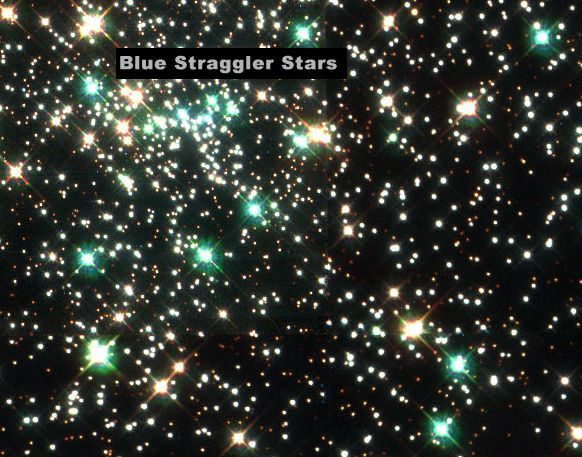Blue Stragglers In NGC 6397

Explanation:
In our neck of the
Galaxy stars are too
far apart
to be in danger of colliding, but in the dense cores of
globular star clusters star collisions
may be relatively common.
In fact,
researchers have evidence that the row of six
closely spaced blue stars
just below the label in this
Hubble Space Telescope image
were formed when stars directly collided.
Pictured is the central region of
NGC 6397, a
globular cluster
about 6,000 light-years distant, whose
stars all formed at about the same time.
NGC 6397's
massive stars have long since evolved off the main sequence,
exhausting their central supplies of
nuclear fuel.
This should leave the cluster with only old low mass stars; faint red
main sequence stars and brighter blue and
red giants.
However, spectroscopic data show that the indicated stars, descriptively
dubbed
blue stragglers, are clearly
main sequence stars
which are too blue and too massive to still be there.
Suggestively the stragglers appear to be two and occasionally three
times as massive as the lower mass cluster stars
otherwise present,
supporting evidence for
their formation from two and even three star collisions.
Authors & editors:
Robert Nemiroff
(MTU) &
Jerry Bonnell
(USRA)
NASA Web Site Statements, Warnings,
and Disclaimers
NASA Official: Jay Norris.
Specific
rights apply.
A service of:
LHEA at
NASA /
GSFC
& Michigan Tech. U.

